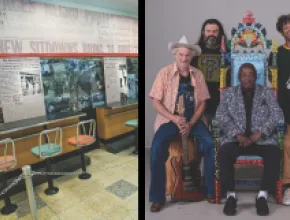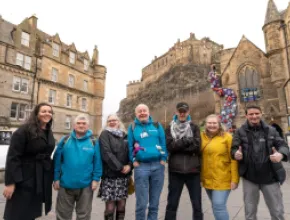Some social media and technology marketers say it was serendipity and good luck that it caught Internet fire and went beyond mere success to become a cultural “phenom.”
The it—that online summer “ice bucket challenge” that brought in over $100 million for the ALS Association from over three million donors—did more than raise a bundle of money for the organization, which funds research to support finding treatments and a cure for the disease. It also raised public awareness and created a sympathetic worldwide community for ALS, while entertaining nearly everyone who stepped into its sphere.
But can an online messaging grassfire be duplicated—and controlled—for use inside or about meetings and events? Though nearly every social media marketer agrees it's nigh on impossible to ensure a message goes viral, there are definitely steps one can take to encourage participation.
Movement Over Moment. Motivating people to attend an event (the moment), embrace a cause or act on a message requires what some call movement, says Ben Grossman, vice president of strategy for Jack Morton Worldwide, a global marketing agency. "People want to attend an event that is part of a broader movement," he says. "This is a natural for causes like ALS, but not so much for B2B brands and services, though it can be.
"Good movement has a central purpose," he continues. It's purpose-driven marketing that gives people a reason to enlist and be a part. If you create community, they will have reason to attend your event. Organizers need to give people something to talk about and social media can be the platform."
Keep It Simple. The ALS challenge was simple (donate money, pour ice water over your head, or both, and then challenge three friends to do the same), advocated a great cause, and it was fun. Anyone could and did participate.
"If you are asking people to do something, don't make it complicated," advises Emily Harris, digital marketing manager at Rockhouse Partners. "Think in terms of an ‘elevator pitch’ style, otherwise they won't respond. Your directions should be easy to recall if you ask them an hour later what you asked them to do. And remember to keep it light and respectful—this is very important. And don't try to be funny if you're not."
Ease of Entry. Anyone—from celebrities and politicians to grandparents and teens—could take part in the ALS challenge because it appealed to all ages and all walks of life.
"It had low entry commitment to play, and it had peer pressure," says Roger Rickard, founder and partner of meetings industry advocacy group Voices in Advocacy, "because you call out three others and challenge them to reciprocate and find others, a great way to raise support."
Entry to the movement didn't even have to cost money. Those who didn't donate did their bit to move a message and motivate others. The playing field was level and many got onto it.
Harness Video Power. Videos are most likely to go viral these days on platforms like Facebook and YouTube, as those about the ALS challenge did. They offer more of a personal experience than a single image, say social media marketers. And most everyone can record videos with their mobile devices, so it's easy to hit record and then upload to social media.
If you design a message you want to catch fire online, Harris advises the use of images, video and copy that are relevant and easy for users to duplicate.
"Give your audience [content] that is easy for users to copy and paste. If you do, you'll find this will increase the number of people who will engage with and post about an event," she says.
For Twitter, "pick a short, generic and evergreen hashtag," advises Guy Kawasaki, chief evangelist at Canva. "The big picture is that you want a hashtag that's constantly in people's faces, trending and consistent, whether it refers to an event or new television commercials."
PageBreak
Make It Self-Focused. The "selfie" culture can help you spread your message far and wide. People like to star in messages they post to social media. So design a campaign that gives your audience direction for creating content that's more interesting than a picture of the fish they ate for dinner.
The ALS challenge had people putting themselves at the center of the action and bringing in others to help them dump water. And in this way, it became a community event.
"We have used 'selfies'—the word of the year—and asked people to use our hashtag to get our conference traffic going," says Liz King, CEO of Liz King Events. "We were surprised by how many people got into it and got the buzz going with their friends and followers. People want something fun to do online, and selfies can get things going pretty fast. Just be sure to have resources at hand if things really do go viral, like having enough tickets for everyone who wants to attend your event."
Include Emotion. The ALS challenge gave people the chance to star in their own videos, share an experience with others, and to feel like they were participating in a good, charitable cause that was authentic. Many would not have taken the dive into cold water had it not been for the charity piece.
"Emotion moves people to do and think things," Rickard says. "I tell people to watch the 70th anniversary video for the Ad Council on YouTube, and I ask them what they see—emotion, children, pets, military, celebrities and messages that contain easily digested facts. That's how you put a face on your cause."
Avoid Controversy. People of all persuasions, political and otherwise—especially celebrities—could step into the ALS challenge territory without fear of raising a ruckus, offending anyone or creating a public relations problem for themselves. It had universal appeal.
"Using celebrities can be very tricky, because somebody might attack them for endorsing something even if it is well intentioned," Rickard says. "The ALS challenge used big names in the way the Jerry Lewis telethon used them for decades to raise funds for muscular dystrophy. Nobody attacks someone for wanting to help kids with MD. So your issue or cause dictates whether and what celebrity should be attached to it."
Don't Forget the Influencers. Influencers from many walks of life, not just pop celebrities, got into the ALS challenge, Grossman points out, and this was a huge impetus.
Influencers who would have normally cost huge fees for their endorsements or participation were creating and sharing their videos.
"Just make sure you have influencers who buy into your idea,” he advises. “This is key to good social by design. It enlarges your reach many times over.”
The bottom line for the ALS ice bucket challenge: even though it was a viral Internet wildfire that may have ignited without much planning, it had all the components of a good contemporary social media-by-design messaging campaign that can be applied elsewhere, like meetings and events, where planners want a message to be adopted fast and wide.
Messaging is, after all, about motivating people to act and donate, buy, believe, understand or adopt something.






